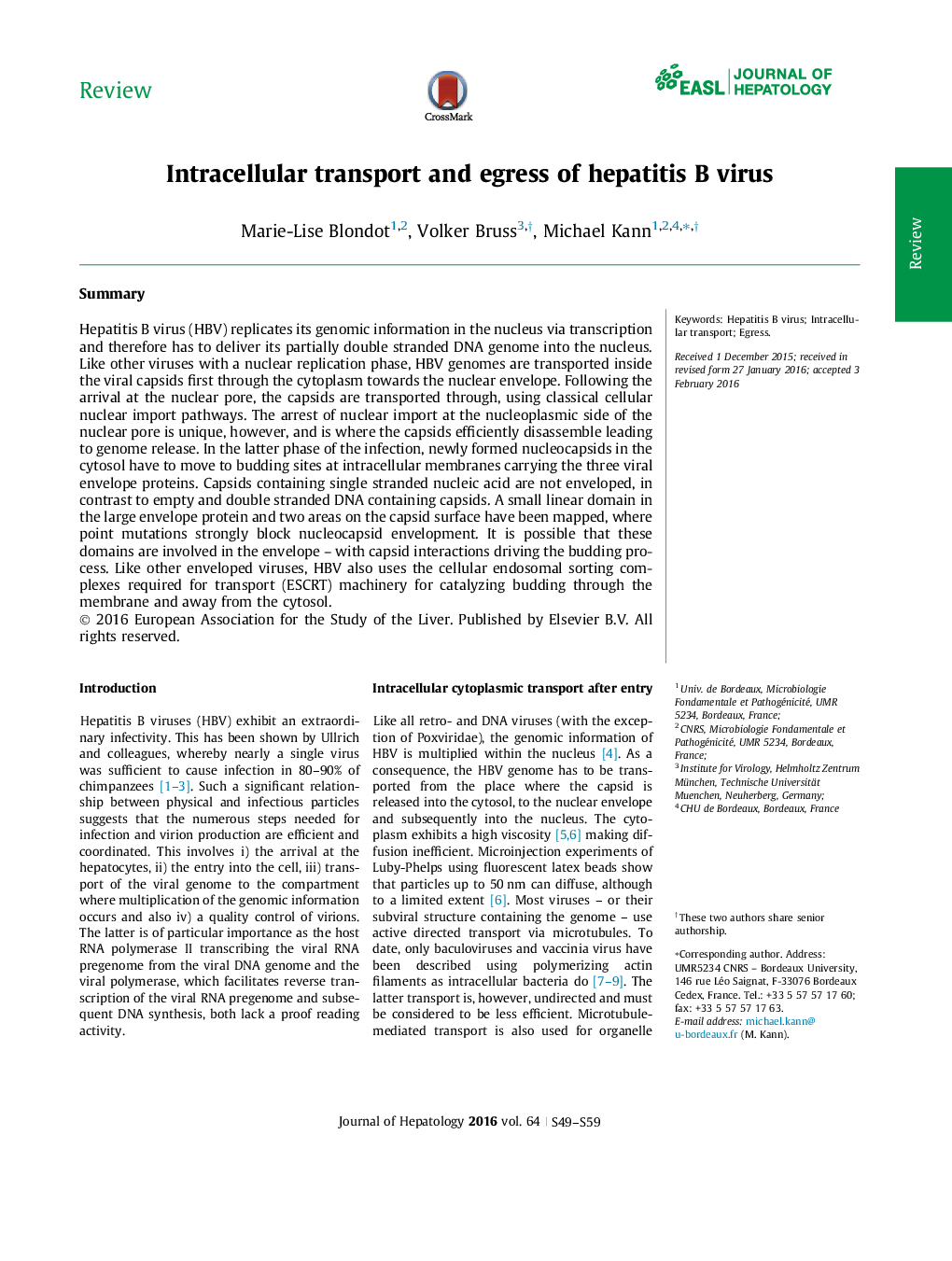| کد مقاله | کد نشریه | سال انتشار | مقاله انگلیسی | نسخه تمام متن |
|---|---|---|---|---|
| 3313540 | 1211102 | 2016 | 11 صفحه PDF | دانلود رایگان |

SummaryHepatitis B virus (HBV) replicates its genomic information in the nucleus via transcription and therefore has to deliver its partially double stranded DNA genome into the nucleus. Like other viruses with a nuclear replication phase, HBV genomes are transported inside the viral capsids first through the cytoplasm towards the nuclear envelope. Following the arrival at the nuclear pore, the capsids are transported through, using classical cellular nuclear import pathways. The arrest of nuclear import at the nucleoplasmic side of the nuclear pore is unique, however, and is where the capsids efficiently disassemble leading to genome release. In the latter phase of the infection, newly formed nucleocapsids in the cytosol have to move to budding sites at intracellular membranes carrying the three viral envelope proteins. Capsids containing single stranded nucleic acid are not enveloped, in contrast to empty and double stranded DNA containing capsids. A small linear domain in the large envelope protein and two areas on the capsid surface have been mapped, where point mutations strongly block nucleocapsid envelopment. It is possible that these domains are involved in the envelope – with capsid interactions driving the budding process. Like other enveloped viruses, HBV also uses the cellular endosomal sorting complexes required for transport (ESCRT) machinery for catalyzing budding through the membrane and away from the cytosol.
Journal: Journal of Hepatology - Volume 64, Issue 1, Supplement, April 2016, Pages S49–S59